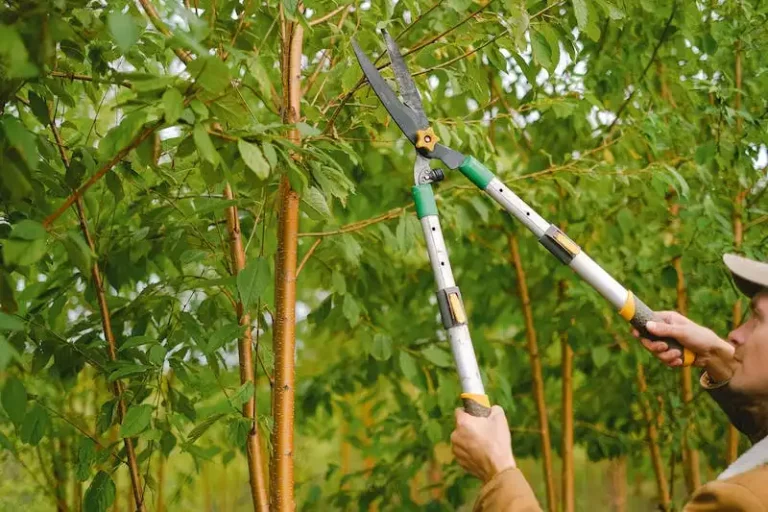Foxgloves are gorgeous flowers that bloom in various colors, including purple, pink, white, and yellow. They are known for their tall stalks that rise above the foliage, making them stand out in any garden. Foxgloves are commonly found in borders and flower beds, but they can also grow wild in certain conditions. If you want to add these beautiful flowers to your garden, here is some essential information on how to grow foxgloves successfully.
Step 1: Seeds or Roots
Foxgloves can be grown from seeds or roots. If you choose to grow from seeds, you can start by sowing them directly into the ground in early spring. Make sure to press the seeds gently into the soil and keep them well-watered. If you prefer to grow from roots, you can purchase young foxgloves from a garden center. Plant the roots in a well-draining soil and water thoroughly. Both methods can result in beautiful foxgloves, but growing from seeds allows you to select specific colors and varieties.
Step 2: Ideal Conditions
Foxgloves prefer moist soil and partial shade. They can tolerate different types of soils, but well-draining soil is essential to prevent root rot. Foxgloves grow best in cooler climates and may struggle in extreme heat. If you live in a hotter region, make sure to provide afternoon shade for your foxgloves. In areas with harsh winters, the leaves of foxgloves may die back, but the plant will often return in the spring for another round of blooms.
Step 3: Care and Maintenance
Once your foxgloves start to grow, it’s important to keep an eye out for any signs of disease or pest problems. Foxgloves can be affected by powdery mildew, leaf spot, or aphids. If you notice any problems, remove the affected leaves or treat the plants with a suitable remedy. To encourage more flowers, you can also remove the spent flower stalks. However, if you want to collect seeds, leave a few stalks to dry out and form seed pods.
Step 4: Enjoying Foxgloves
Foxgloves are stunning additions to any garden, and their tall flower spikes can create a dramatic effect. You can plant them in groups or scatter them throughout your garden for a wilder, more natural look. If you’d like to have foxgloves in bloom earlier in the season, you can start the seeds indoors in trays and then transplant them outside when the weather improves. Just make sure to harden off the seedlings by gradually exposing them to outdoor conditions before planting them in their permanent spots.
With these tips and information, you’ll be able to successfully grow foxgloves and enjoy their beautiful flowers in your garden. Whether you choose to grow them from seeds or roots, foxgloves are sure to add a touch of elegance and charm to any landscape.
Foxglove
Foxglove is a common and gorgeous biennial flower that grows wild in many places. It has tall stalks, with clusters of tubular flowers that come in various colors, including pink, purple, and white. Foxgloves are known for their beautiful foliage, with large leaves that are smooth and lance-shaped.
If you want to grow foxgloves, there are a few important steps to follow. In the early spring or late fall, sow foxglove seeds directly into the garden. Choose a sunny or partially shaded spot, where the soil is moist and well-drained. Foxgloves can also be started indoors in trays or individual pots.
When sowing foxglove seeds, lightly cover them with soil and water thoroughly. If you’re planting them indoors, keep the trays or pots in a warm and brightly lit area. Once the seedlings have grown a few sets of leaves, they can be transplanted into larger containers or directly into the garden.
Foxgloves prefer moist conditions, so regular watering is essential. They also benefit from light fertilizing during the growing season. If the plants become overcrowded, thin them out to allow for better air circulation.
Foxgloves are generally pest-free, but they can occasionally attract aphids and slugs. In such cases, traps or organic pest control methods can be used to protect the plants. It’s also important to keep an eye out for any signs of disease or problems, such as leaf spots or wilting.
Once foxgloves bloom, they will bring a touch of elegance to your garden. The tall flower stalks can reach above three feet and are adorned with beautiful blooms. Deadheading the spent flowers will encourage more blooms throughout the season.
At the end of the growing season, foxgloves will produce seeds. If you want to collect and save these seeds for future sowing, wait until the pods have turned brown and have started to split open. Then, gently remove the seeds and store them in a cool and dry place until you’re ready to sow them again.
Growing foxgloves may require some care and attention, but the results are definitely worth it. These stunning flowers will add a touch of elegance and color to any garden, and their biennial life cycle ensures that they will come back year after year.
For more information or tips on growing foxgloves, there are many resources available online or at your local gardening center. Take the time to learn about the cultural and moisture requirements of foxgloves, as well as any specific information related to your growing zone.
How to Grow Foxgloves
Foxgloves are gorgeous flowered plants that can be easily grown in your garden. They add a touch of elegance and color with their tall stalks of bell-shaped flowers. If you want to learn how to grow foxgloves, follow these steps:
| Step 1: | Choose a spot in your garden that has well-drained soil and receives partial shade. Foxgloves prefer these growing conditions. |
| Step 2: | Prepare the soil by removing any weeds or debris. Loosen the soil to a depth of about 12 inches to allow the roots to grow easily. |
| Step 3: | If you have foxglove seedlings, gently plant them in the prepared soil, spacing them about 12 inches apart. If you have foxglove seeds, you can sow them directly into the garden in early spring or late summer. |
| Step 4: | Lightly press the seeds or seedlings into the soil and water thoroughly. Keep the soil lightly moist until the seedlings are established. |
| Step 5: | Foxgloves require regular watering, especially during dry spells. However, be careful not to overwater them as they can wilt easily. |
| Step 6: | Keep an eye out for common pests such as aphids and slugs. If you notice any pest problems, wash the leaves with water or use organic pest control methods. |
| Step 7: | As the foxgloves grow, you may need to provide support for the taller varieties by placing stakes or using plant support rings. |
| Step 8: | Once the foxgloves start to bloom, enjoy their beautiful flowers. Cut off the flower stalks after they have finished blooming to encourage new growth. |
Here are some additional tips and information for growing foxgloves:
- Foxgloves are biennials, which means they have a two-year life cycle. They will first grow leaves and roots in the first year, and then bloom in the second year.
- Foxgloves can self-seed and come back year after year if the conditions are right.
- If you want foxgloves to bloom again the following year, leave some flowers on the plant to allow them to set seeds.
- There are many different varieties of foxgloves available, with different colors and flower forms. Choose the ones that you like best for your garden.
- Although foxgloves are generally disease resistant, they can be susceptible to rust and fungal leaf spots. To prevent these diseases, make sure the plants have good air circulation and avoid overhead watering.
- If you have any pests or disease problems, please refer to our FAQs section or consult a gardening expert for more information on how to solve these issues.
- Remember, foxgloves are poisonous if ingested, so be cautious when planting them around children and pets.
With proper care and attention, your foxgloves will grow into stunning plants that will brighten up your garden with their beautiful flowers.
All About Foxgloves
If you’re interested in growing foxgloves, it’s important to learn all about these beautiful flowers. Foxgloves, also known as Digitalis, are stunning biennials that can add a touch of charm to any garden. Below, you’ll find essential information on how to grow foxgloves from seedlings or seeds, their cultural requirements, common pests and diseases, and how to care for them.
Foxgloves can be grown from seed or from seedlings available at your local garden centers. If you choose to grow them from seed, it’s best to sow them early in the year. Sow foxglove seeds directly in the garden or start them indoors in trays. Foxgloves prefer fertile, well-draining soils in sunny or partially shaded positions.
Once the seeds are sown, you’ll need to keep them moist until they germinate. It’s important to water them thoroughly but avoid waterlogging the soil. If you’re growing foxgloves from seedlings, be sure to transplant them when they’re large enough to handle, spacing them about a foot apart.
Foxgloves are known for their tall flower spikes, which can reach heights of up to six feet. As they grow, it’s important to provide support to prevent them from toppling over. You can use stakes or cages to support the plants.
When foxgloves bloom, their flowers are arranged in clusters along the flower spikes. The blooms come in a variety of colors, including white, pink, purple, and yellow. They attract pollinators such as bees and butterflies to your garden.
Deadheading is an important step in foxglove care. By removing the spent flowers, you’ll encourage the plant to produce more blooms and prevent it from self-seeding. If you want foxgloves to self-seed, allow some flowers to go to seed and collect them for planting next year.
Foxgloves can be prone to certain pests and diseases. Common pests include aphids, slugs, and snails. You can learn how to trap and control these pests to keep your foxgloves healthy. Diseases such as powdery mildew and root rot can also affect foxgloves. It’s important to keep the plants well-ventilated and avoid overwatering to prevent these diseases.
In addition to their beauty, foxgloves have a fascinating life cycle. They are biennials, which means they have a two-year life span. In the first year, the plant grows as a rosette of leaves. In the second year, it produces the tall flower spikes. After flowering, the plant will set seed and die. However, some foxgloves may self-seed and come back for several years.
If you’re looking to add a touch of wild beauty to your garden, foxgloves are a great option. Their impressive height, colorful blooms, and cultural requirements make them a nice addition to borders or as a focal point in flower beds. Learn all about foxgloves, follow the steps for planting and care, and you’ll soon enjoy the beauty of these enchanting flowers in your garden.




